Last updated on
Discover the various factors that influence the cost of installing a pocket door, making it an efficient and stylish space-saving solution for your home.
Pocket doors have been a popular choice for homeowners and interior designers alike, especially when it comes to saving space and adding a touch of elegance to any room. If you’re considering installing pocket doors in your home, then you might be wondering about the cost involved.
While pocket doors can be an excellent investment for your home, there are several factors that can impact the overall cost of installation. In this article, we’ll explore everything you need to know about the cost of installing pocket doors so that you can make an informed decision and get the most out of your investment.
Key takeaways:
- Pocket doors are a stylish and space-saving solution for any room.
- Factors such as size, materials, and customization affect the cost.
- Labor costs range from 0 to 0 for a standard-sized pocket door.
- Custom pocket doors can cost anywhere from 0 to ,000 or more.
- Retrofitting pocket doors into existing walls may require additional modifications.
Table of Contents
Pocket Door Overview

Pocket doors are a type of sliding door that disappears into the wall when opened, making them an excellent space-saving solution for any room. They have been around since the mid-1800s and were initially used in Victorian homes to separate formal living spaces.
Today, pocket doors are popular in modern homes as they offer a sleek and stylish alternative to traditional hinged doors.
One of the main advantages of pocket doors is their ability to save space by eliminating the need for swing clearance. This makes them ideal for small rooms or areas where floor space is limited, such as bathrooms or closets.
Another benefit of pocket doors is their versatility when it comes to design options. They come in various styles and materials ranging from classic wood finishes to contemporary glass panels with aluminum frames.
Types of Pocket Doors

The most common type is a single-pocket door that slides into a wall cavity and disappears from view when opened. Another popular option is double-pocket doors, which slide into opposite walls and meet in the middle when closed.
In addition to these standard options, you can also find pocket doors with glass panels or decorative designs for added style. Some homeowners even opt for custom-made pocket doors that match their unique design preferences.
It’s important to consider your specific needs and preferences before choosing a type of pocket door for your home. For example, if you’re looking to save space in smaller rooms like bathrooms or closets, then a single-pocket door may be the best choice.
On the other hand, if you want an elegant entryway between two larger rooms like living areas or dining spaces then double-pocket doors could be perfect.
Material Options

The most common materials used for pocket door construction include wood, glass, and metal. Wooden pocket doors offer a classic look that can complement any interior design style.
They come in various types of wood such as oak or maple and can be painted or stained to match your decor.
Glass is another popular option for those who want a modern touch in their home’s interior design. Glass panels allow natural light into the room while still providing privacy when needed.
Metal is also an excellent choice for those looking for durability and strength in their pocket door installation project. Steel frames provide added security while aluminum frames offer lightweight convenience.
Pocket Door Costs By Size

Pocket doors come in various sizes, and each size has different installation requirements and costs associated with it. Generally speaking, larger pocket doors will require more materials and labor to install than smaller ones.
The average cost for a standard-sized pocket door ranges from $500 to $1,000 for both materials and labor. However, if you’re looking to install a larger or custom-sized pocket door, then you should expect to pay more.
It’s essential to keep in mind that while larger doors may be more expensive upfront; they can also add significant value to your home by creating an open floor plan or making rooms feel bigger than they are.
When considering the size of your new pocket door project, make sure you take into account any additional costs such as hardware upgrades or soundproofing options that may be necessary depending on where the new opening is located within your home.
Determining Project Scope
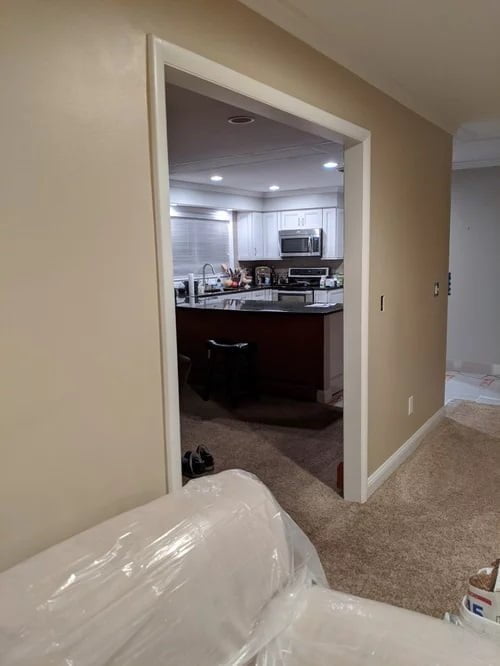
When it comes to installing pocket doors, there are several factors that can impact the overall cost and complexity of your project. For example, if you’re replacing an existing door with a pocket door or installing one in new construction will affect the amount of labor required.
Another factor is whether you want a standard-sized pocket door or a custom size. Custom sizes may require additional materials and labor costs compared to standard sizes.
Consider how many doors need installation as this will also influence pricing. If only one room requires installation versus multiple rooms throughout your home can significantly impact total costs.
New Vs Existing Construction
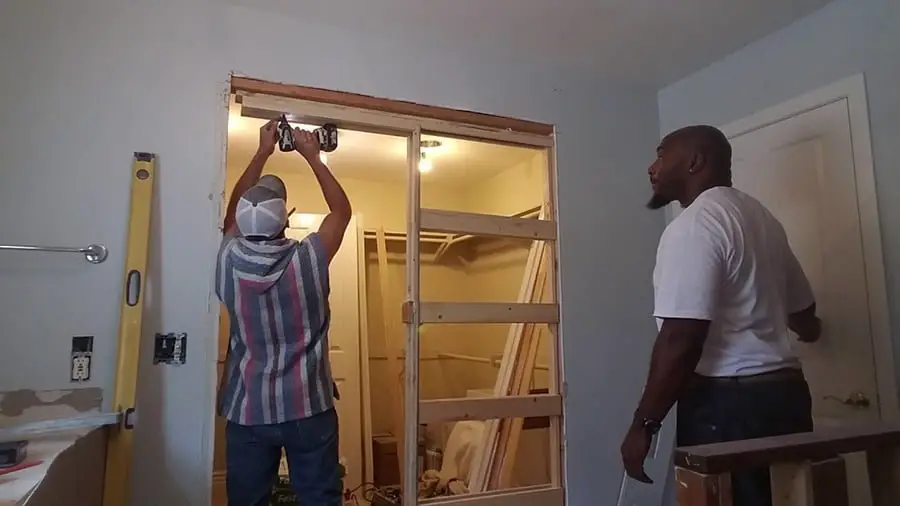
If you’re building a new home or renovating an existing space, then installing pocket doors may be more straightforward and less expensive than retrofitting them into an already finished room.
New construction projects offer greater flexibility in terms of design and layout, making it easier to incorporate pocket doors from the outset. This means that there are fewer obstacles to overcome during installation, which can help keep costs down.
On the other hand, if you’re adding a pocket door to an existing room or structure where no opening currently exists for your desired location – such as converting a traditional hinged door into a sliding one – then additional work will need doing before installation begins. This could include removing drywall and framing out openings for tracks and hardware placement.
Measuring for Installation
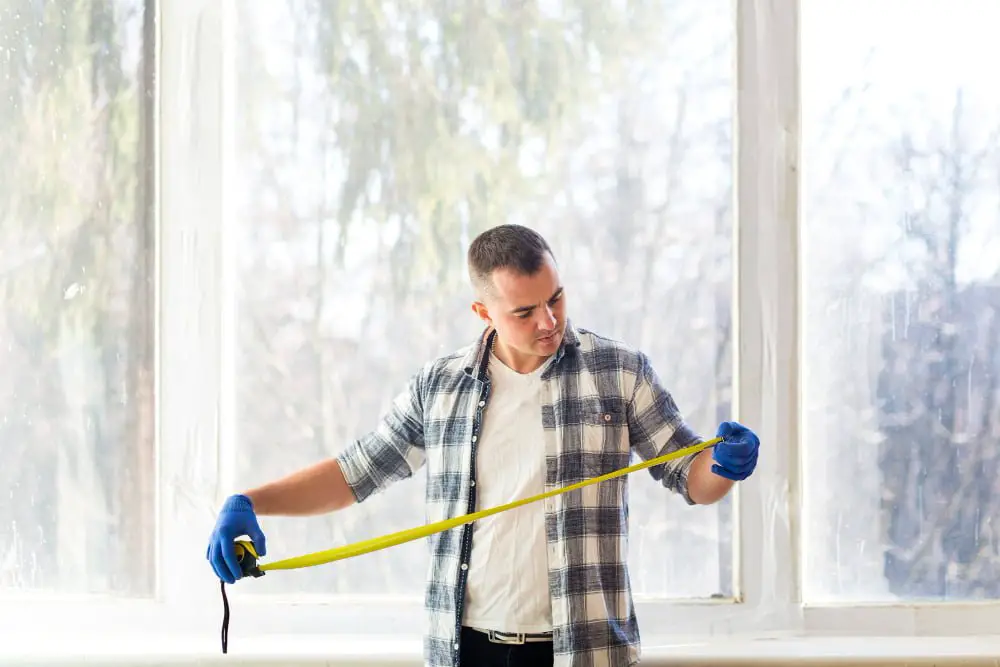
Measuring for installation is crucial because even small errors can cause significant problems during the installation process. To get started, measure the height and width of your existing door frame or opening where you want to install a new pocket door.
Next, determine how thick your wall is by measuring from one side of the wall to another. This measurement will help you choose an appropriate track system that fits within your walls’ thickness.
It’s also important to consider any obstructions in or around the doorway area that may affect installation. For example, light switches and electrical outlets may need relocation before installing a pocket door.
If measuring for an existing opening with no previous framing installed (such as in remodeling), make sure there are no pipes or wires running through where framing needs placement; otherwise, they’ll have to be rerouted before proceeding with construction.
Hiring Professionals Vs. DIY

While DIY installation can save you money on labor costs, it’s important to consider your skill level and experience with home improvement projects before taking on this task. Installing a pocket door requires precision and attention to detail, as even small mistakes can affect the functionality of the door.
Hiring professionals for installation ensures that your pocket doors are installed correctly and efficiently. Professional installers have years of experience in handling various types of installations, which means they know how best to handle any challenges that may arise during the process.
Hiring professionals gives you peace of mind knowing that your investment is protected by warranties offered by reputable companies in case anything goes wrong after installation.
However, if you’re confident in your skills and have some prior knowledge about installing similar types of doors or frames then going DIY could be an option for saving some cash while still getting quality results.
Labor Costs

The installation process requires skilled labor, and the complexity of the project can impact how much you’ll pay for labor. In general, hiring a professional to install your pocket door will ensure that it’s done correctly and efficiently.
The average hourly rate for a carpenter or handyman ranges from $50 to $100 per hour, depending on their experience level and location. Installing a standard-sized pocket door typically takes around four hours, which means you can expect to pay between $200-$400 in labor costs alone.
However, keep in mind that if your project is more complex or involves custom work such as soundproofing or insulation installation; then this may increase both material and labour expenses significantly.
While DIY installations might seem like an attractive option due to lower labour costs; it’s essential not only have adequate knowledge but also possess necessary tools required for proper installation before attempting any home improvement projects yourself.
Pocket Door Hardware Costs
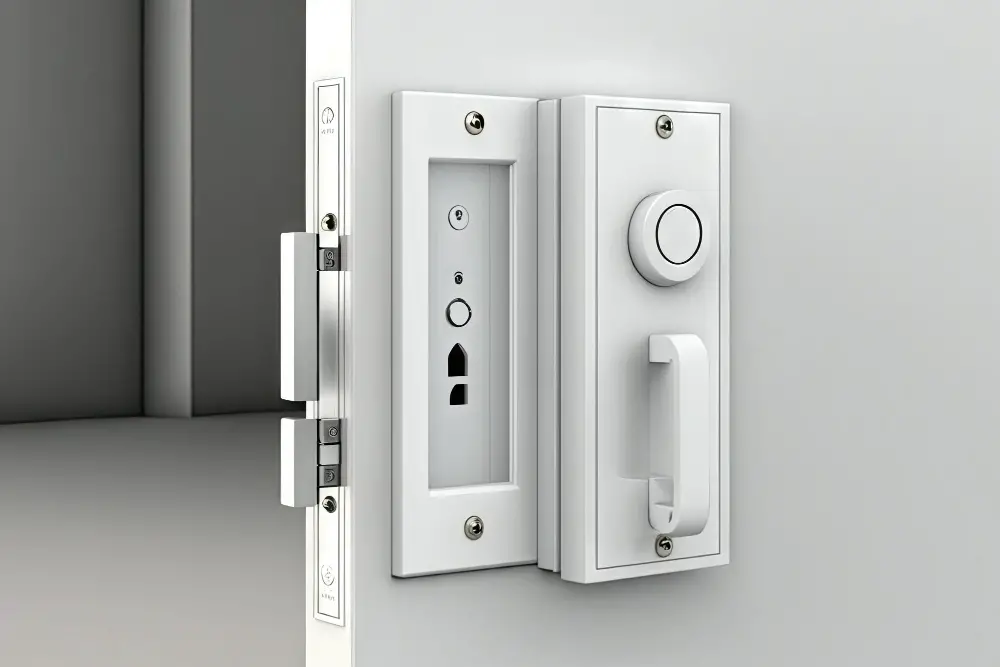
Pocket door hardware includes everything from handles and locks to rollers and tracks. The type of hardware you choose will depend on several factors, including the size and weight of your door, as well as your personal style preferences.
Basic pocket door hardware kits typically include a track system with rollers or ball bearings for smooth operation. These kits usually cost between $50-$100 per set depending on the quality and brand.
If you’re looking for more decorative options or need additional features like soft-close mechanisms or privacy locks, then expect to pay more for premium-grade materials which can range anywhere from $150-$500 per kit.
It’s important to note that some manufacturers offer complete pocket door installation kits that include all necessary components such as framing systems along with their respective prices ranging between $300-$1,000 depending on complexity level required by each specific project.
Cost of Door Frame and Track System

The cost of these items can vary depending on the size, material, and complexity of your project. Generally speaking, you can expect to pay between $100-$300 for a standard-sized pocket door frame kit that includes the necessary hardware.
If you’re looking for higher-end materials or custom sizes, then costs may increase significantly. For example, solid wood frames will be more expensive than aluminum or steel ones due to their durability and aesthetic appeal.
It’s important to note that some kits come with pre-drilled holes while others require drilling during installation which could add extra time and labor costs if not done correctly.
Additional Tools and Supplies
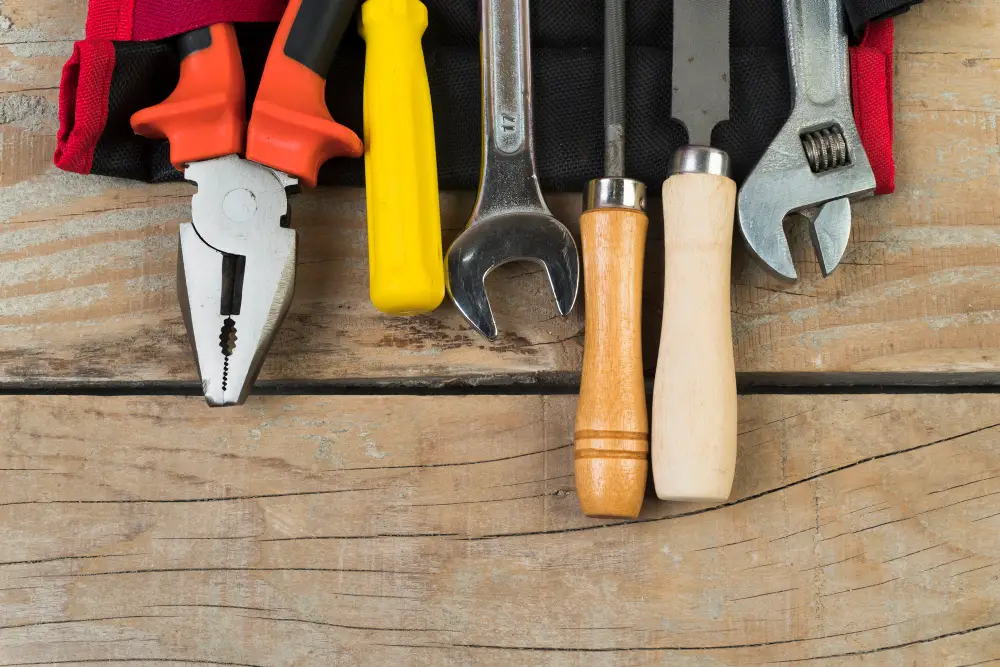
These can include items such as screws, nails, adhesive tape or glue, sandpaper for smoothing rough edges on the door frame or track system components. You may also require specialized tools like a drill with various bits (including spade bits), saws (jigsaw or circular saw), leveler tool for ensuring proper alignment of the tracks and frames.
It’s important to note that some of these items may already be included in your installation kit if you purchase one from a hardware store. However, depending on your specific project needs and preferences regarding quality materials versus budget-friendly options; you might want to invest in higher-quality products separately.
Custom Pocket Doors Pricing
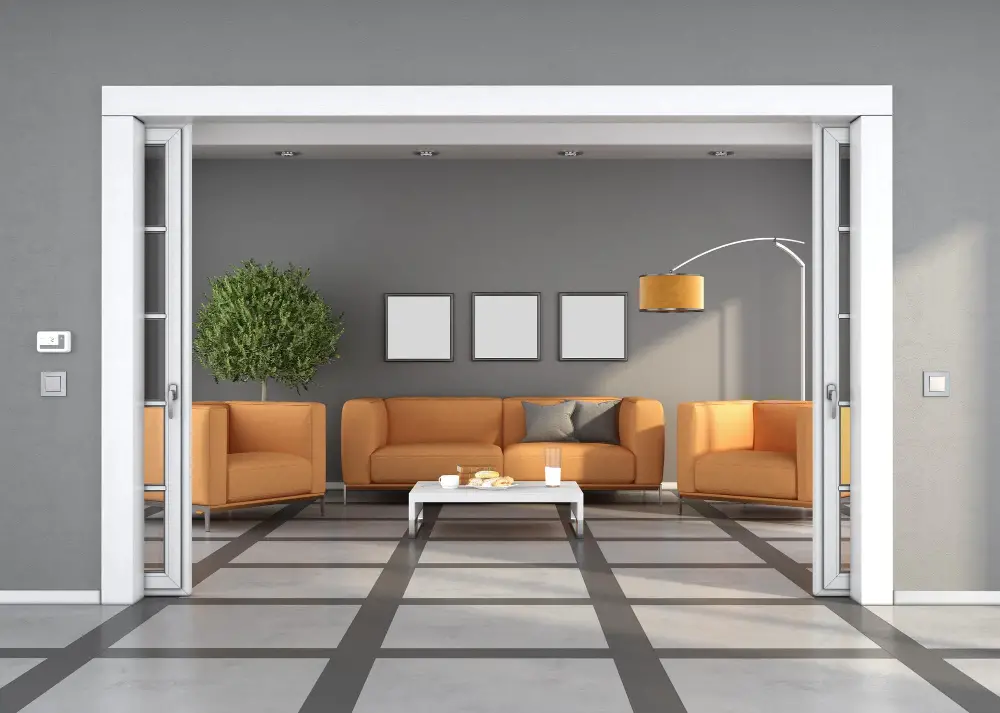
Customizations can significantly impact the overall cost of installation. The price of custom pocket doors varies depending on several factors such as size, material, design complexity and hardware options.
The average cost for a standard-sized custom pocket door ranges from $500-$2,000 or more depending on the level of customization required. For instance, if you want intricate designs or special finishes like glass inserts or metalwork incorporated into your door design then expect to pay more.
It’s essential to work with professionals who specialize in creating customized solutions for homeowners looking for something unique and tailored specifically towards their needs. They will help guide you through the process by providing expert advice on materials selection and pricing options that fit within your budget constraints.
Replacing Existing Doors
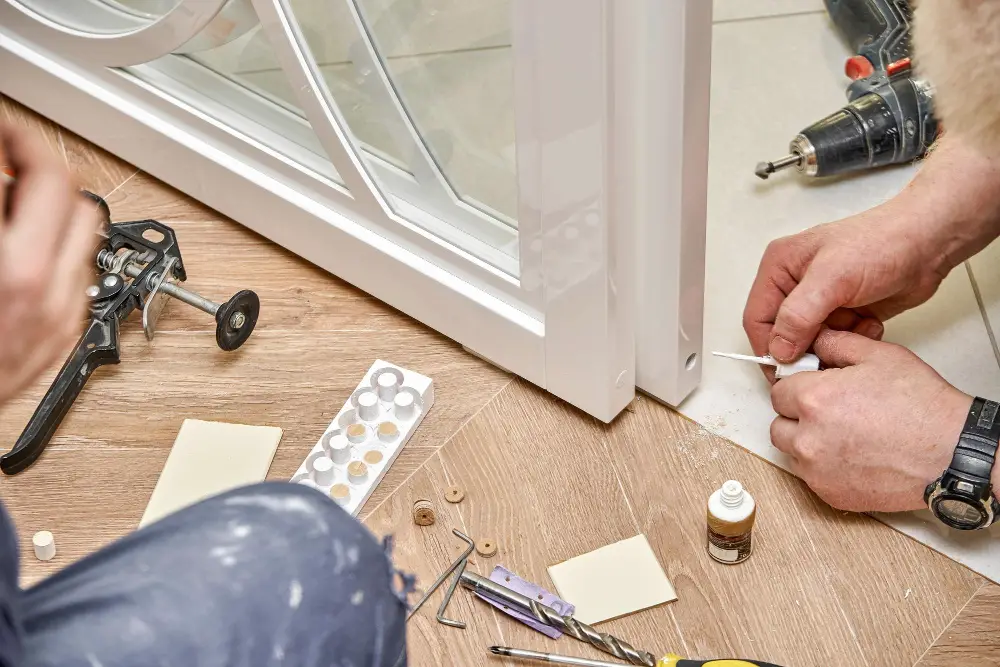
The first thing to consider is whether your current door frame can accommodate a pocket door or if it needs to be modified. If modifications are necessary, this will add additional costs for labor and materials.
Another factor that affects the cost of replacing existing doors with pocket doors is the size of the opening. Larger openings require larger and more expensive hardware systems, which can increase overall project costs.
It’s also important to note that removing an existing door and installing a new one requires careful attention to detail in order not to damage surrounding walls or flooring during installation. This may require additional repairs or touch-ups after installation is complete.
Soundproofing and Insulation
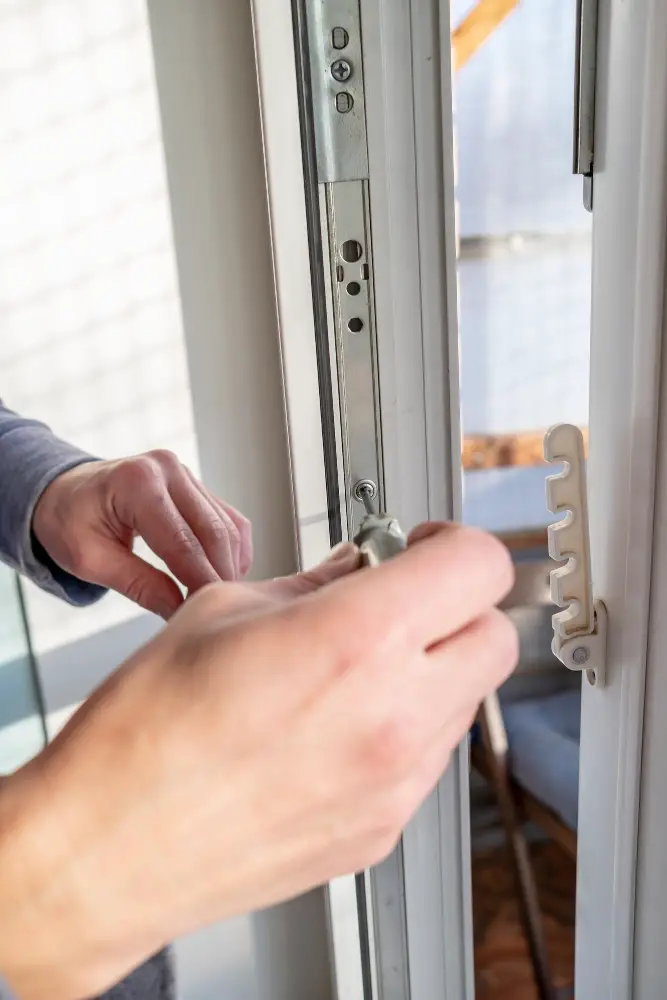
While pocket doors can be an excellent space-saving solution, they may not provide the same level of sound insulation as traditional hinged or sliding doors. If you’re planning to install a pocket door in a room where noise reduction is crucial, such as a home office or bedroom, then it’s important to choose materials that offer adequate soundproofing.
One option for improving the sound insulation of your pocket door is to use solid-core doors instead of hollow-core ones. Solid-core doors have more mass and density than their hollow counterparts, which makes them better at blocking out noise.
Another way to improve the acoustic performance of your pocket door is by adding weatherstripping around its edges. This will help seal any gaps between the frame and the wall, reducing air leaks that can allow outside noises into your home.
Consider using acoustic panels on walls adjacent to where you plan on installing your new door if additional measures are needed for optimal results.
Impact On Property Value

Pocket doors are an attractive feature that can add to the overall aesthetic appeal of your home, making it more desirable to potential buyers. Pocket doors offer practical benefits such as space-saving and improved accessibility which may also increase the value of your property.
However, it’s important to note that while installing pocket doors may increase the resale value of your home in some cases, this is not always guaranteed. The actual impact on property value will depend on various factors such as location and market demand for homes with unique features like pocket doors.
Permit and Inspection Requirements
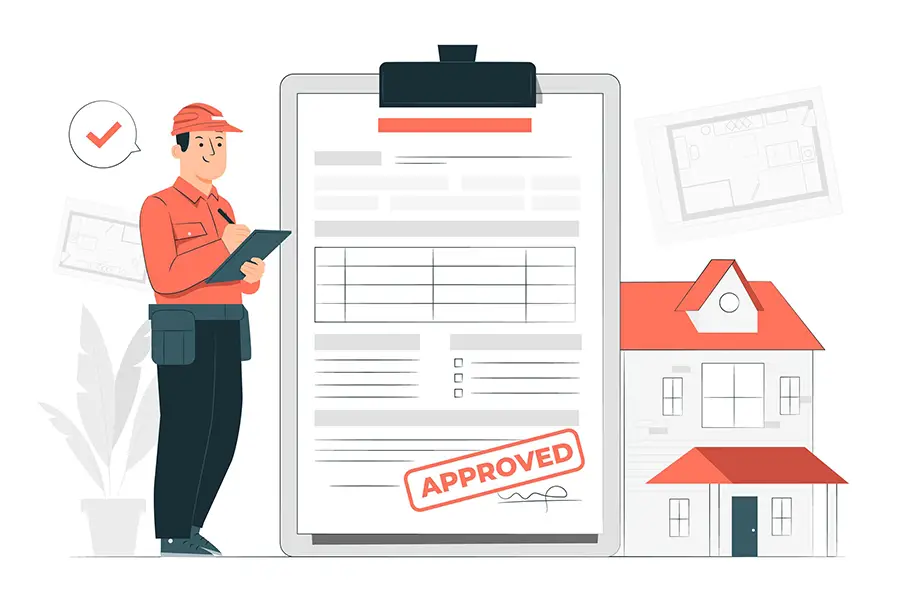
Permit requirements vary depending on the location and scope of the project. In some cases, a permit may not be necessary for replacing an existing door with a pocket door or installing one in non-load-bearing walls.
However, if you’re planning on making structural changes or cutting into load-bearing walls, then you’ll likely need to obtain permits from your local building department. Failure to do so can result in fines and legal issues down the line.
Once installation is complete, it’s important that your work is inspected by a qualified professional before closing up any walls or ceilings. This ensures that everything has been installed correctly according to code regulations and safety standards.
Timeframe for Installation

The length of time required for installation can vary depending on several factors such as project scope, size and type of door, and whether it is new construction or a replacement.
For instance, if you’re replacing an existing door with a pocket door in an already finished wall opening that requires no additional framing work or modifications to electrical wiring or plumbing systems, then the installation process may take only one day.
However, if your project involves creating new openings in load-bearing walls or modifying existing ones to accommodate larger doors than what was previously installed; this will require more extensive structural work that could take up several days.
It’s important to note that hiring professionals can help ensure timely completion while also minimizing any potential issues during installation. A professional contractor will have experience working with different types of doors and materials and be able to provide accurate estimates regarding how long each step should take based on their expertise.
The timeframe for installing pocket doors varies depending on various factors such as project scope and size/type of the door involved.
Common Challenges and Solutions
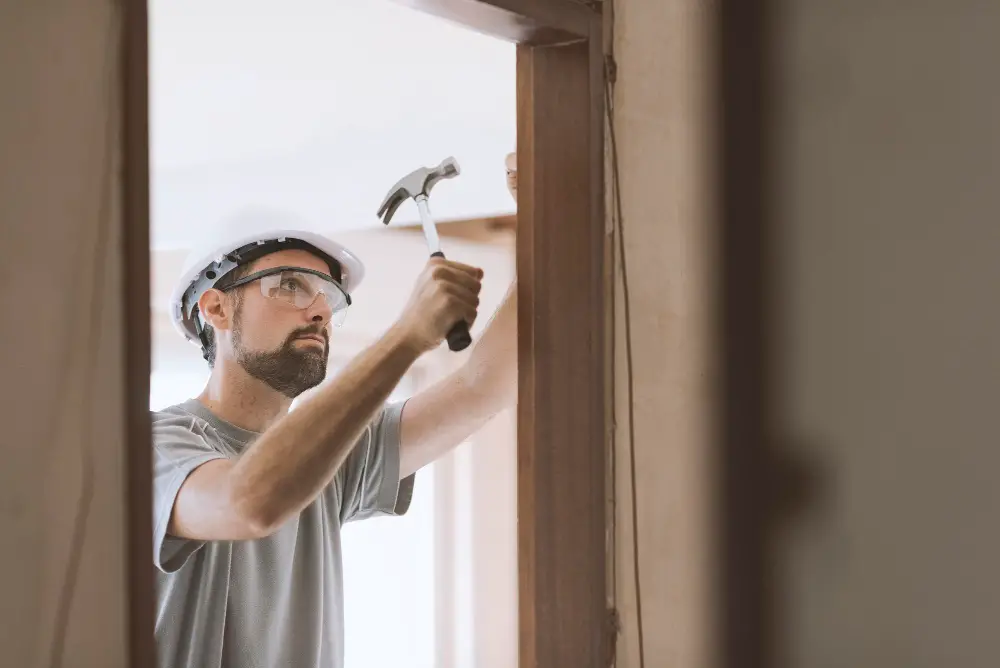
One of the most significant issues is ensuring that the door slides smoothly and doesn’t get stuck or come off its track. This can be caused by improper installation, incorrect measurements, or poor-quality hardware.
Another challenge is soundproofing and insulation. While pocket doors can save space in your home, they also have less sound-blocking ability than traditional doors due to their design.
To address this issue, you may need to install additional insulation materials around the frame or use specialized acoustic seals.
Accessibility can be an issue for some homeowners who require wider openings for mobility devices such as wheelchairs or walkers. In these cases, custom-sized pocket doors may need to be installed with larger frames and tracks.
Fortunately, there are solutions available for each of these challenges when installing a pocket door in your home.
Accessibility and Universal Design

Pocket doors can be a great option for those with mobility issues or disabilities as they require less clearance space than traditional hinged doors. Pocket doors can be designed to meet universal design standards that make them easier for everyone in the household to use.
For example, wider doorways are often recommended in homes where wheelchair access is necessary. A pocket door system allows you to create a wider opening without sacrificing valuable floor space.
You may also want to consider installing automatic openers or touchless sensors on your pocket doors if you have family members who struggle with manual dexterity.
By incorporating these features into your home’s design, you’ll not only improve its functionality but also increase its value and appeal should you decide to sell it later on down the line.
FAQ
How much does it cost to install a pocket door in an existing wall?
The cost to install a pocket door in an existing wall ranges from $1,000 to $3,500.
Are pocket doors more expensive to install?
Yes, pocket doors are more expensive to install, especially in existing walls, due to the required modifications to a home’s structure.
Can a pocket door be installed in an existing wall?
Yes, a pocket door can be installed in an existing wall without the need for a big hole or knocking down the wall.
Is it hard to change a regular door to a pocket door?
Changing a regular door to a pocket door can be challenging as it requires removing the existing door and modifying the wall structure to accommodate the wider opening needed for a pocket door.
What factors can influence the overall cost of a pocket door installation?
Factors such as door materials, frame materials, labor costs, and additional features can influence the overall cost of a pocket door installation.
How does the cost of installing a pocket door compare to other door types, such as sliding or barn doors?
The cost of installing a pocket door is generally higher than that of other door types such as sliding or barn doors, due to the additional labor involved in creating a pocket within the wall.
What additional considerations should be taken into account when retrofitting a pocket door in a load-bearing wall?
Additional considerations when retrofitting a pocket door in a load-bearing wall include ensuring proper structural support by using suitable headers and reinforcing the wall to maintain its integrity.




